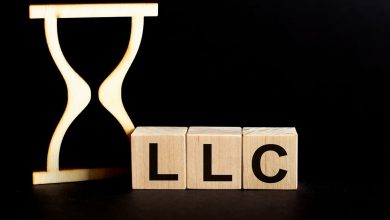Research Reveal Most Successful Business Structures

According to recent statistics by the U.S Tax Foundation, the three most popular business entities are sole proprietorships, LLC.s, and partnerships. There are 23 million sole proprietorships in the United States now, which is more than all other types of business entities combined.
Businesses differ not only in terms of size and sector but also in terms of employees and who owns them. Some are owned by a single individual or a small group of people, while others are owned by a large number of stockholders, charity foundations or trusts, and even the government.
Different ownership structures and legal forms that a company might assume sometimes overlap. Many of a business’s legal responsibilities are determined by its legal and ownership structure, including the paperwork that the owners must complete in order to set up the business, the taxes that the business must pay, how profits are distributed, and the owners’ personal responsibilities and liabilities for when the business possibly loses money or goes bankrupt. Business formation steps are also different for each business structure. Activities like choosing the best LLC services and hiring registered agents will differ.
The following brief outline will assist you in appreciating the diversity of businesses. Organizations that are owned and run by private owners, those that are owned and run by the state, and those that are run by voluntary organizations can be distinguished at the widest level. Below we will be looking at the various forms of privately owned business structures:
Sole Proprietorship
A sole proprietorship is a person who owns and operates a business on their own. Sole traders can keep all of the earnings after paying tax, but they are personally liable for any losses the firm incurs (i.e., they must cover them with their own money if required), paying the business’s expenses (e.g., stock or equipment), and keeping a record of all sales and expenditures. Sole proprietors can hire staff because the phrase only suggests that they own the business and do not have to work alone.
Limited Liability Company

A limited liability company (LLC) is a business entity formed by its owners to conduct its operations. An LLC is a legal entity. The word refers to the fact that the law considers a limited corporation to have the same legal standing as a person, i.e., it has legal rights and obligations separate from the rights and obligations of its owners as individuals.
The corporation owns any profit produced after taxes. The corporation can then distribute its gains to all of its shareholders, which is the most frequent scenario. Members are the people who own the shares in a limited company.
There are also ‘directors’ in a limited company. Directors can be stockholders, but they aren’t required to be. The liability of shareholders and directors for the company’s financial liabilities (such as losses or debts) is limited to the value of their stock.
This means that if the company gets into financial troubles, they won’t have to pay out of their own income or assets. Private limited companies and public limited companies are the two primary forms of limited companies.
The stock market is where public limited corporations’ (PLCs) shares are traded, and anyone can acquire shares in the company if they want to. Private limited companies are not listed on the stock exchange, and other persons can only buy shares in them with the current owners’ permission.
Partnership
A partnership is a business arrangement in which two or more people share ownership of the company. General partnerships and limited partnerships are the two most common types of partnerships.
In a general partnership, all partners are personally liable for the firm, which means they can use their personal income or fortune to cover any losses or debts. If the business suffers losses or incurs debts, the partners in a limited partnership are not personally accountable. Profits from a partnership are divided among the partners, who subsequently pay taxes on their respective portions.
Final Thought
Other legal ownership structures for businesses exist in the United States, but the three mentioned above are the most popular. Many other states and countries have similar corporate ownership models, albeit the legal implications vary significantly.
Read Also: Business Tips: LLC Vs Corporation – What Is Better?



